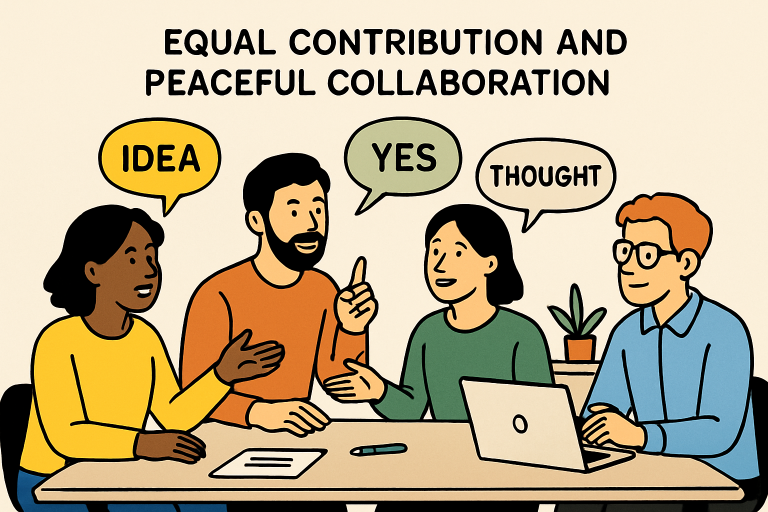Key Takeaways
- Modern diversity initiatives encompass more than just hiring practices—they extend to culture, leadership, and daily interactions.
- Research reveals that diverse teams often outperform homogenous groups by encouraging innovation and creative problem-solving.
- Companies benefit from fostering environments where authenticity and inclusion are truly valued, not just stated.
- Effective diversity programs are data-driven, regularly assessed, and adapted to reflect employee input and societal progress.
- External studies show that organizations prioritizing diversity also improve employee satisfaction and retention.
The Current Landscape of Workplace Diversity
Today’s workplaces are rapidly evolving, and the pursuit of diversity is becoming a strategic imperative rather than a compliance exercise. Genuine diversity touches every facet of an organization, from boardroom representation to how teams interact on a daily basis. Progressive organizations are increasingly trying to define diversity in the workplace beyond surface-level representation, recognizing its foundational role in driving innovation and sustainable success.
Representation across genders, races, backgrounds, and perspectives remains important, but authentic inclusion is the next critical step. Modern employees expect workplaces where diverse voices are genuinely empowered, not just represented. True inclusion goes beyond quotas, influencing daily interactions, career growth, and leadership opportunities, ensuring everyone feels a real sense of belonging. Building such an environment requires continuous effort, adaptability, and transparent, accountable leadership.
Why Diverse Teams Challenge the Status Quo
Teams with diverse backgrounds consistently show they can boost performance, question traditional approaches, and spark innovative breakthroughs. The variety of perspectives they bring is essential for tackling complex problems, generating novel solutions, and seizing distinctive market opportunities.
This advantage extends across both product and process innovation. Whether creating offerings that meet a wide range of customer needs or identifying inefficiencies that more uniform teams might overlook, leading organizations view diversity as a strategic asset that constantly rejuvenates their creativity and problem-solving potential.

Core Elements of Effective Diversity Initiatives
- Leadership Commitment: Leaders must do more than endorse policies—they need to model inclusive behavior, champion accountability, and prioritize representation in decision-making spaces.
- Transparent Communication: A culture of openness ensures employees can safely voice concerns, share feedback, and participate in organization-wide conversations about inclusion.
- Continuous Education: Regular training on unconscious bias, cultural competence, and allyship helps cultivate awareness, empathy, and an adaptive mindset among employees at all levels.
Building a Culture Where All Voices Matter
True inclusion is measured not by headcounts, but by the degree to which everyone feels empowered. Creating space for every voice starts with leaders who prioritize open feedback, recognize diverse holidays and traditions, and make meetings more participatory. HBR notes that dedicated feedback tools such as anonymous suggestion platforms can help surface honest, actionable insights from those who might feel apprehensive in public forums.
Celebration of diverse contributions and life experiences, coupled with policies that enable every employee to participate, increases psychological safety and belonging. Over time, these efforts create a flywheel effect: Higher engagement leads to better retention, which further enriches the organization’s culture and diversity.
Proven Benefits of Workplace Diversity
A commitment to both diverse representation and an inclusive culture directly correlates with measurable business results. Organizations that genuinely embrace diversity report higher profitability, greater employee satisfaction, and increased resilience in the face of market changes. According to Pew Research, workplaces that prioritize equity, inclusion, and diversity not only strengthen their internal culture but also improve external outcomes, including customer service and brand reputation, helping companies cultivate broader and more loyal client bases.
Beyond these tangible benefits, diverse and inclusive workplaces are linked to higher levels of innovation, greater adaptability during economic fluctuations, and stronger organizational trust. Such environments attract high-performing talent and position companies to respond confidently to future disruptions.
How to Measure Diversity Progress
- Regularly assess representation metrics—across departments, job roles, and leadership levels—to track momentum.
- Conduct employee surveys to gauge satisfaction, inclusion, and psychological safety.
- Review promotion rates and retention by demographic group, identifying internal bottlenecks and advancement opportunities.
- Solicit feedback on workplace policies, then adapt those policies as employee needs and societal expectations evolve.
Using both quantitative data and qualitative employee feedback helps organizations set achievable goals, make evidence-based decisions, and celebrate progress. Many experts recommend reviewing these metrics on a quarterly basis and integrating actionable insights into broader HR strategies.
Common Challenges and Practical Solutions
- Unconscious bias: Establish standardized interview questions, diverse hiring panels, and de-biasing workshops to ensure fair evaluation.
- Lack of representation in leadership: Formalize mentorship and sponsorship initiatives to accelerate the growth of internal diverse talent.
- Creating sustainable change: Empower employee resource groups (ERGs) to contribute to policy formation, ongoing training, and companywide celebrations—not just symbolic projects.
Complex as these challenges can be, ongoing commitment and adaptability are key. For example, leading organizations are tapping employee resource groups to provide feedback on policies, ensuring continuous relevance and buy-in.
Future Trends: Adapting to a Dynamic Workforce
The next generation of diversity initiatives will be more proactive, blending technological tools with human empathy to create living, adaptable frameworks. As digital environments and remote work models expand, organizations must recalibrate how connection, inclusion, and belonging are fostered across time zones and cultures. Those that prioritize ongoing learning and responsive communication will continue to stand out as employers of choice.
Conclusion: Embracing Diversity as a Strategic Imperative
Workplace diversity and inclusion are more than just ethical goals; they are essential drivers of innovation, engagement, and long-term business success. Organizations that prioritize authentic inclusion, measure progress, and address challenges proactively create environments where all employees feel empowered to contribute. By treating diversity as a continuous journey rather than a one-time initiative, companies position themselves to attract top talent, adapt to evolving workforce dynamics, and cultivate a culture where every voice truly matters.
